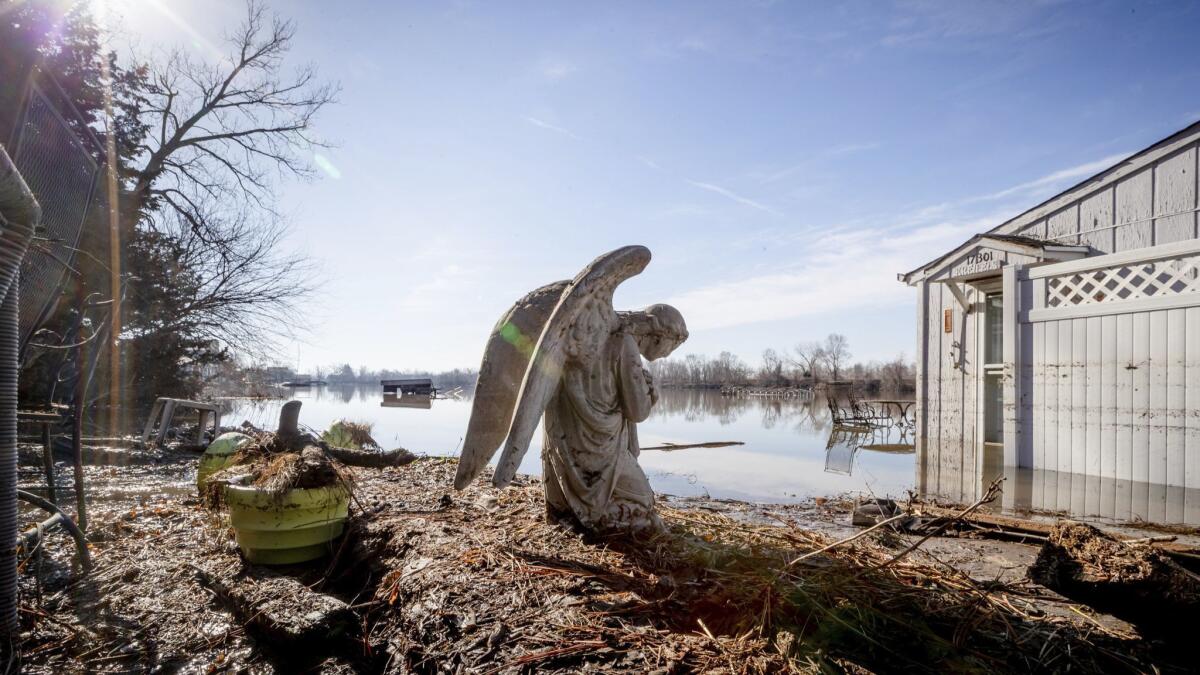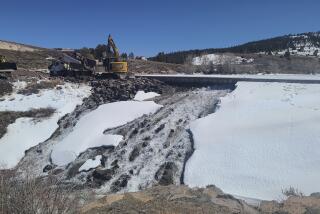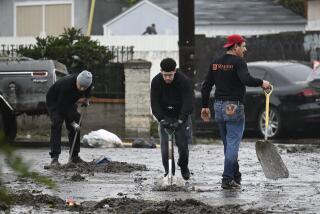Experts warn Midwest flood risk may persist for months

Even as floodwaters receded in hard-hit places in the Midwest, experts warned Saturday that with plenty of snow still left to melt in northern states, the relief may only be temporary.
Rainfall and some snowmelt spurred flooding in recent weeks that’s blamed in three deaths so far, and two men in Nebraska have been missing for more than a week. Thousands were forced from their homes in Nebraska, Iowa and Missouri, as water broke through or poured over levees in the region. The damage is estimated at $3 billion, and that figure is expected to rise.
As temperatures start to warm, snowmelt in the Dakotas and Minnesota will escalate, sending more water down the Missouri and Mississippi rivers and their tributaries.
Lt. Col. James Startzell, deputy commander of the Corps of Engineers’ Omaha district, said even warmer temperatures are possible into next week. He urged people living near rivers to be watchful.
Bill Brinton, emergency management director for hard-hit Buchanan County, Mo., which includes St. Joseph’s 76,000 residents, said his counties and surrounding ones have already been ravaged by flooding.
“There’s a sense from the National Weather Service that we should expect it to continue to happen into May,” Brinton said. “With our levee breaches in Atchison and Holt and Buchanan counties, it’s kind of scary really.”
A precautionary evacuation involving hundreds of homes in the St. Joseph area was lifted as the Missouri River began a swift decline after unofficially rising to a new all-time high, inches above the 1993 record. St. Joseph was largely spared, but Brinton said 250 homes were flooded in the southern part of Buchanan County. It wasn’t clear when residents would be able to get back.
When they do, officials say they need to be careful. Contaminants that escaped from flooded farm fields, industrial operations and sewage plants are part of the murky water now saturating homes.
In Fremont County, Iowa, homes remain underwater, so it will be some time before residents can return, said County Supervisor Randy Hickey.
“We don’t want them in that water, anyway,” Hickey said.
Experts also warn that sharp objects — broken glass, pieces of metal, sticks and rocks — could lurk in muddy debris. Downed or broken power lines also may pose electrocution hazards.
On Saturday, Iowa Gov. Kim Reynolds, a Republican, said President Trump granted her request for an expedited disaster declaration for 56 counties with flooding damage. The move makes assistance available to homeowners, renters, businesses, public entities and some nonprofit organizations.
The Missouri River had yet to crest further downstream in Missouri, but the flooding impact in those areas was expected to be far less severe.
In South Dakota, Republican Gov. Kristi Noem activated 13 members of the Army National Guard to help distribute water on the Pine Ridge Indian Reservation after floodwaters washed out a county waterline. The guardsmen will provide drinkable water to people in the communities of Red Shirt, Pine Ridge, Porcupine, Evergreen and Wounded Knee.
More to Read
Start your day right
Sign up for Essential California for news, features and recommendations from the L.A. Times and beyond in your inbox six days a week.
You may occasionally receive promotional content from the Los Angeles Times.






